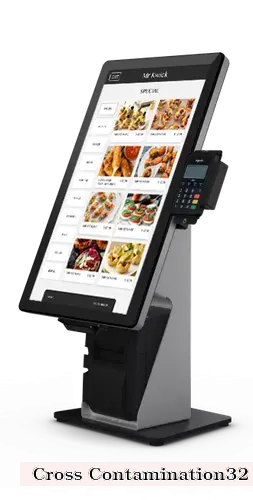

Cross contamination refers to the transfer of harmful bacteria or other contaminants from one food or surface to another, potentially causing foodborne illness. In a restaurant setting, cross contamination can occur in various ways, such as:
1. improper handling of raw meat, poultry, or seafood: Raw meat, poultry, and seafood can carry harmful bacteria like Salmonella, E. coli, and Campylobacter. If these foods are not handled and stored properly, the bacteria can spread to other foods and surfaces, potentially causing foodborne illness.
2. inadequate cleaning and sanitation: Restaurants must maintain proper cleaning and sanitation practices to prevent the spread of bacteria. This includes regularly cleaning and sanitizing utensils, equipment, and food preparation surfaces.
3. poor personal hygiene: Food handlers must practice good personal hygiene, including washing their hands frequently, wearing clean clothes and hair restraints, and avoiding touching their face or hair while handling food.
4. inadequate cooking and reheating: Foods must be cooked and reheated to the proper temperature to kill harmful bacteria. Inadequate cooking or reheating can lead to the survival of bacteria, which can then be transferred to other foods or surfaces.
5. cross-contamination from raw sprouts: Raw sprouts, such as alfalfa or radish sprouts, can be a source of salmonella and E. coli. Cross-contamination can occur when raw sprouts are contact with other foods or surfaces.
6. temperature abuse: food must be stored at proper temperatures to prevent the growth of harmful bacteria. Temperature abuse can occur when foods are left at room temperature for extended periods or when refrigerators are not maintained at the proper temperature.
7. poor food labeling: Labeling food with the incorrect date or contents can lead to foodborne illness.
To prevent cross-contamination in a restaurant, the following steps can be taken:
1. train food handlers on proper food handling and sanitation practices.
2. Maintain cleaning and sanitation schedules for equipment and food preparation surfaces.
3. Conduct regular inspections to identify and address potential cross-contamination sources.
4. Monitor food storage, preparation, and serving practices to ensure that foods are stored, cooked, and served safely.
5. Use proper food labeling and date storage to ensure that expired food is discarded and not used.
It is crucial for restaurants to implement proper food handling, storage, and sanitation practices to prevent cross-contamination and ensure the safety of their customers.
I hope this was helpful in understanding cross-contamination in the restaurant industry. Do you have any questions on this subject?
DISCLAIMER: This information is provided for general informational purposes only, and publication does not constitute an endorsement. Kwick365 does not warrant the accuracy or completeness of any information, text, graphics, links, or other items contained within this content. Kwick365 does not guarantee you will achieve any specific results if you follow any advice herein. It may be advisable for you to consult with a professional such as a lawyer, accountant, or business advisor for advice specific to your situation.
today
Copyright © 2025 Kwick365.com
Designed by KwickPOS is the best restaurant POS